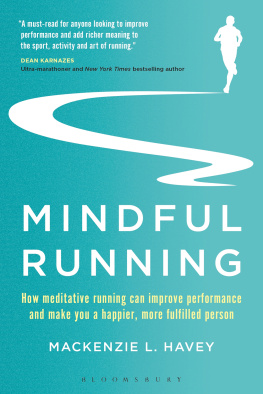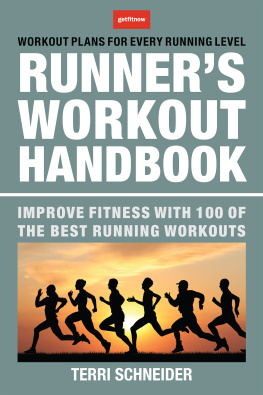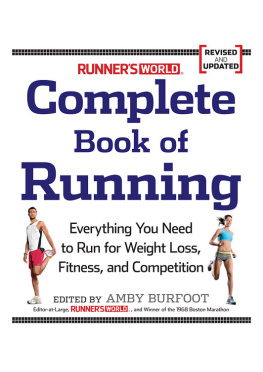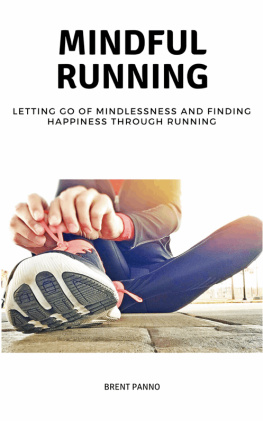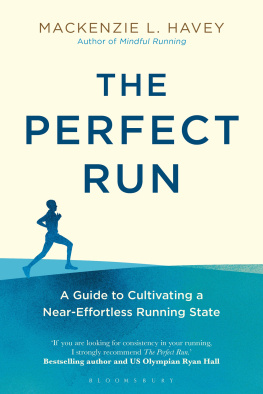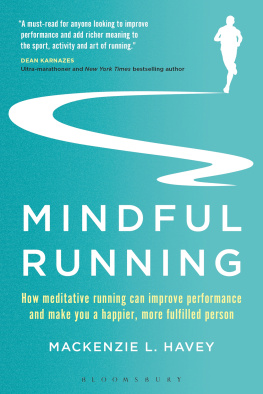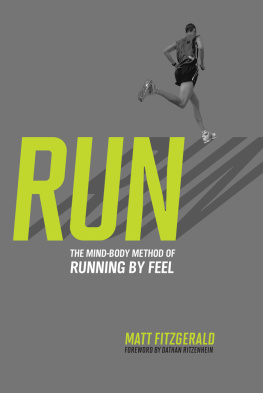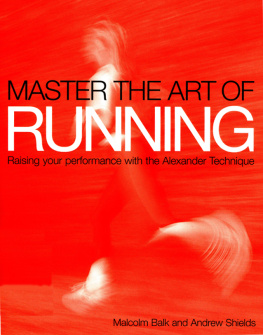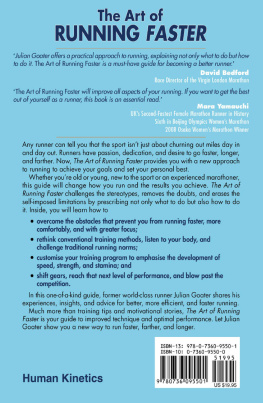
For Jason, Liesl, and Welly
the loves of my life
and the best running partners I could ever ask for

CONTENTS
A buzzing throng of 50,869 runners stood on the blustery shores of Staten Island in their assigned corrals at the start line of the 44th running of the New York City Marathon on November 2nd, 2014. Hailing from 130 countries and all 50 states, it was the largest marathon in history. Ten thousand volunteers and two million eager spectators packed the streets and the subways of the Big Apple.
An already hectic morning was made more challenging by a vicious blast of Arctic air that dropped snow on Chicago and Detroit a couple days earlier and swept eastward, arriving in New England just in time for the race. Along with it came bone-chilling 40F (4C) winds that gusted upwards of 45 miles per hour.
Race organizers dismantled signage and tents in the start village to ground potential projectiles, while volunteers huddled together out of the wind. Race bibs and running caps were ripped right off the athletes and blasted skyward by the unrelenting gusts. All manner of race-day debris floated up into the ether.
Worried a wheeler might be overtaken by the wind, officials decided to move the start line of the wheelchair and handcycle races to the Brooklyn side of the Verrazano-Narrows Bridge, shortening the course to 23.2 miles. The double-decked suspension bridge that connects Staten Island and Brooklyn, which makes up much of the first 2 miles of the race, is particularly vulnerable to high winds due to its size and proximity to the open ocean. All the while, television crews throughout the city struggled to keep video feeds broadcasting to the world as their equipment was repeatedly toppled by the elements.
The type of searing wind that cuts through every layer of clothing, rattling your bones, freezing your blood, stinging your face, and drying your eyeballs, it was a categorically brutal morning for runners, spectators, media, organizers, and volunteers alike.
New York City Mayor Bill de Blasio was there to bolster the mood, wishing runners well at the start line: To all the runners who fought hard to get to this day, like all New Yorkers, youre not going to let some cold or wind hold you back.
The nervous athletes bounced up and down in a fruitless attempt to warm up as the start time approached. They wore wool hats, old sweatshirts, and plastic bags, all to be shed once the race got going.
When the gun fired, the frontrunners took off over the bridge and soon settled into a rhythm well off record pace on account of the conditions. Stuck in the congestion, those in the middle and back of the pack moved at a snails pace as they urged the tens of thousands of runners before them to push ahead.
On the bridges, crosswinds nearly picked runners up off their feet and blew them sideways. On the city streets, headwinds funneled between buildings, making striding forward at any speed an arduous task. As they made their way from Staten Island through Brooklyn, Queens, the Bronx, and to the finish line in Manhattans Central Park, many struggled mightily against the frigid, face-slapping gales.
Meanwhile, Mary Wittenberg, race director and New York Road Runners (NYRR) CEO and president at the time, waited at the finish line for hours, trying to keep warm. Standing in that same spot many times since starting her tenure with NYRR in 1998, shed seen a lot over the years. But at the 2014 finish line, she observed something particularly striking. The less-than-favorable conditions seemed to firmly place runners in two camps. In one, there were the athletes who appeared tense and miserable, grimacing as they crossed the line, and voicing their displeasure with the experience. In the other were the runners who looked relaxed, exhilarated, and unfazed by the weather, throwing their arms up with smiles plastered across their wind-burned faces.
The contrast was so dramatic, I thought, how can there be two totally different experiences? Wittenberg recently told me from her office in New York City, where she now serves as CEO of Richard Bransons Virgin Sport. She offered this thought:
Im convinced that the runners who were more worried about their times and anxious about the conditions tensed up in that wind and fought it the whole way, while the othersrunners of all paces, including many fast peoplejust focused on relaxing and enjoying a great run through New York. By staying relaxed, it was as if they werent punished by the wind as much.
As is true in many situations in both running and life, the harder you try to accomplish something through sheer force of will, the more difficult the task becomes. Instead of harboring keen awareness and intuition to gracefully navigate the constellation of interactions between body, brain, and environment in adverse conditions, we blindly rely on grit, toughness, and brute strength. While those skills arent for naught, we end up employing them indiscriminately because we are so disconnected. The synchrony of mind, body, and spirit is lost.
I very much recognized myself in those overwrought runners from the story Wittenberg told me. I had once been the athlete who would get so focused on an end goal that I paid little attention to what was going on with my body and mind on the path to reaching that objective. Not only did that contribute to overtraining injuries, it also meant that when I ran, my unsupervised mind whirred at breakneck pace, needlessly cycling worries and other preoccupations. My gaze was always fixed on that clear objective on the horizon, but my day-to-day training sometimes felt more akin to motion blur in a photographhurried and freneticsmeared around the margins of the image.
***
I grew up watching the Twin Cities Marathon in my hometown of Minneapolis, Minnesota every fall with my dad. We would get bundled up the first Sunday in October and stop at the gas station near our house to load up on hot chocolate and glazed donuts before heading to our favorite spot to cheer along the Minnehaha Creek, which flows through the south side of the city and eventually empties into the Mississippi River. Our annual outpost was near a house where the residents set up oversized speakers in their yard and blared upbeat music for the athletes. We would sit talking, eating, and offering high-fives to the runners. As a kid, I couldnt wait to someday run the race myself. I caught the running bug in a serious way along that roadside.
In the beginning, I ran simply because it was something I loved to do. The fresh air and freedom of movement drew me to the sport, but it was that feeling of pushing myself a little out of my comfort zone that kept me coming back. Running dialed me into life in a way nothing else did. For these same reasons, I ended up becoming a journalist and covering endurance sports as my main beat. I didnt just want to log miles myself, I also sought to learn what made other runners tick and share with readers their passion for this simple act of movement.
Years later, I was in graduate school working on my degree in sports and exercise psychology, immersed in studying how athletes get burned out when an activity becomes devoid of meaning and detached from intrinsic purpose. I learned that joy wanes and performance suffers when we get so hung up on our ultimate goals that we are no longer in wholehearted pursuit of process. I considered that I might serve as a good case study.

